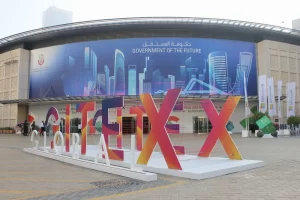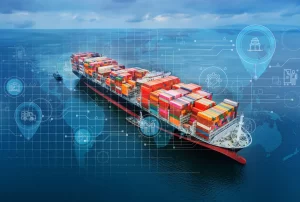As widely reported in recent weeks, the US has now joined many European countries in slashing its overseas aid budget. The United States Agency for International Development (USAID) was put on notice in January when a 90-day freeze on aid payments came into effect after the new US administration announced plans to conduct a sweeping review of US foreign aid and an immediate stop-work order.
Proposed US overseas aid cuts of up to 90%, coupled with reductions of roughly 40% in French and UK aid, and similar decreases in Belgium and the Netherlands, signal a clear trend towards governmental belt-tightening. Until recently, the US spent around USD 70 billion on overseas aid, and in Nigeria, US aid accounted for a staggering 20% of the country’s 2023 health budget. The UK’s 40% cut amounts to around GBP 6 billion, and with 40%–50% of the UK’s total aid budget spent across Africa, many sub-Saharan nations reportedly stand to lose out the most.
But is it the unmitigated disaster it’s been made out to be, and do most African nations prefer handouts from developed countries in lieu of real economic growth, trade and international partnerships? South Africa’s health minister admitted recently that accepting and relying so heavily on overseas aid “was something that we should not have allowed to happen”. For the UAE and other Gulf states that have long enjoyed trade and aid relations with many African nations, there’s an opportunity to expand soft power on the continent and deepen investment into Africa to help close its current funding gap through enhanced trading partnerships.
UAE ready to expand
Although aid agencies aren’t happy – Oxfam described the impacts of the cuts as “immediate and life-threatening” – it is arguable that Africa always needed more trading partners and business partnerships rather than handouts administered by international NGOs. And the UAE is well placed to fulfil that business role.
As an example of what’s possible when it comes to enhanced trading partnerships, Uganda has increased the volume of exports to the Gulf region by over 8,000% since 2000, and 90% of that goes to the UAE and KSA.
The reduction in Western aid presents the UAE with a significant opportunity to expand its business partnerships and strategic investments in Africa while also strengthening its developing alliance with China in the region. It’s not as if the UAE would be entering into an entirely new venture – the country is already one of the largest providers of official development assistance (ODA) relative to national income anywhere in the world and has a long history of providing humanitarian aid to several African nations, on top of its military aid and business investment.
But aid is arguably not what African nations need in the longer term for sustainable economic development. As a case in point, the UAE’s partnerships on the continent have already contributed vast improvements to the flow of trade in Africa, and we’ve seen Chinese firms collaborating with the UAE on port and other industrial infrastructure to help strengthen its already impressive influence over important African and global trade routes. That includes Khalifa Port in the UAE, as well as investment in African infrastructure alongside China; Dubai’s DP World now operates six ports on the African continent, and Abu Dhabi Ports has expanded operations into Egypt, Guinea and Angola.
But the opportunities for the UAE, especially in relation to its deepening partnership with China, go way beyond simple economic ties and mutual investment interests; Africa’s relevance to both China and the UAE rests very much on safeguarding the Horn of Africa’s importance as a strategic shipping route, as well as an extension of what’s regarded around the world as an increasingly steadying neutral power against the backdrop of the dynamic geopolitical realities of today. As a vital link between the Mediterranean and the Indian Ocean, it’s one of the world’s most important routes – carrying around 20% of the world’s entire trade– via the Horn of Africa, through the Gulf of Aden into the Red Sea, up through the Suez Canal and out to the Mediterranean and beyond.
UAE trade and inward investment into Africa: where are we and where are we going?
Does the UAE have the potential to benefit from the vacuum caused by US & European cuts to aid budgets destined for Africa? And can continued UAE investment and partnerships remove the need for handouts and offer African nations a much-needed chance to reap more of the benefits of their own resources and sustain projects previously funded by foreign governments? After all, opportunities exist to explore new ways to fund development, such as debt-for-nature swaps, unlocking the financial power of the creative industries, reducing the crippling costs of money transfers on the continent – the remittance of cash back into Africa from migrant workers outstrips all foreign-aid budgets – and securing investment for clean-energy projects.
As proposed by the co-founder of Global Citizen, an advocacy and education movement that aims to end extreme poverty by 2030, cuts in foreign aid create opportunities to explore alternative funding and partnerships for sustainable development. “The focus shouldn’t just be on what’s being cut,” says Michael Sheldrick, “but on what can be built – not to replace aid, but to complement it and drive more substantial outcomes”.
The UAE enjoys a long history of cultural and linguistic ties with North African nations, but the focus recently has moved beyond this region to encompass the whole of sub-Saharan Africa and its economic potential. Companies in the GCC committed to more than 70 projects in Africa in 2023 worth over USD 53 billion in FDI flows. In fact, the UAE is now Africa’s largest backer of new business ventures, with UAE entities committing USD 110 billion to projects over the course of the last six years, USD 72 billion of which was earmarked for renewable-energy projects.
The UAE and other Gulf partners were already well placed to benefit from Africa’s funding gap and the corresponding opportunity to gain more soft power and influence in the region. After all, African economies need major inflows of FDI, and the collective assets under management (AUM) of the top 10 sovereign-wealth funds in the GCC amount to around USD 4 trillion. That’s more than the UK’s entire GDP.
Africa’s economic potential in everything from critical minerals to land development represents vast opportunities for the UAE and other Gulf countries to grasp, and with an existing funding gap thought to be in the region of USD 150–200 billion, the potential benefits are significant. Why? Because Africa is the world’s largest consumer-growth market and is home to 20% of the world’s consumers. It hosts six of the world’s 10 fastest-growing economies, where 70% of the continent’s population is below the age of 30. Overall, it has the fastest rate of urbanisation and the fastest growth in internet use. What’s more, it has around 60% of the best solar-energy resources in the world, a large share of world’s critical minerals needed for the world’s energy transition, and 60% of the world’s uncultivated arable land for food production.
Prosperity, not dependence: focus on what can be built
With Africa home to the world’s largest and youngest working population and 20% of its consumers, its potential for further partnerships with and investment from the UAE is clear, as are the potential benefits to the UAE’s economic interests and growth.
African countries already represent a critical investment market for the UAE, but the potential for future investment will be driven not just by its existing funding gap, but also by Africa’s huge consumer market. And the UAE’s businesses are poised to benefit from that reality.
Deepening trade and investment links between Africa and the UAE will see additional growth in future years and decades as cuts to aid by the US and Europe are countered by helping African nations wean themselves off Western dependence.



